The history of modern mechanical watchmaking is marked by two innovative periods which have certainly influenced the Heritage Military 1938 and the Avigation Type A-7, Longines pilot's watches.
The first one took place at the turn of the 19th century, when the likes of Breguet, Lepine and Janvier developed modern mechanical watchmaking. It was the period of the French Revolution, the Napoleonic adventure, and the resurgence of British colonialism. In order to meet the needs of the army and particularly the naval forces, the founders of modern watchmaking pushed the boundaries of precision further, especially when it came to marine chronometers.
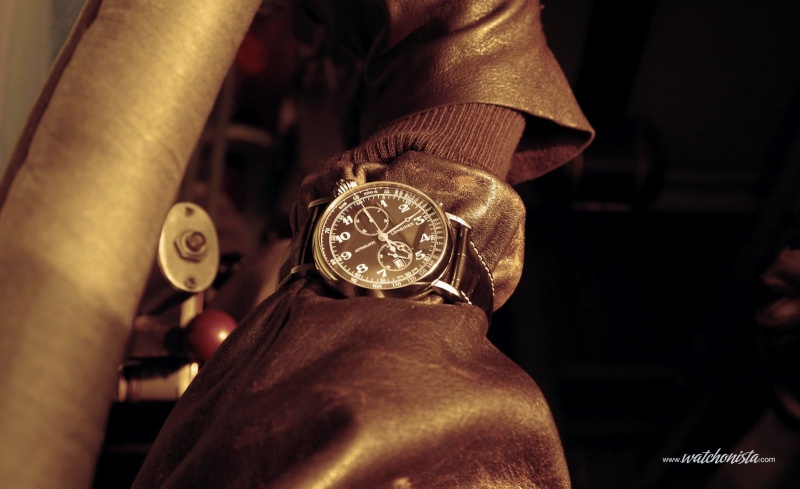
The second great innovative period coincided with the First and Second World Wars. These further boosted the industrialisation of watchmaking. Until the early 1900s, watches had been more or less considered a luxury product. The WWI did allow for industrialisation and miniaturisation thanks to the rapid growth in popularity of the wristwatch for the army at first. All non-commissioned officers, and even privates, needed to have watches to better coordinate attacks on the front with the artillery (which was in full-blown expansion mode) often far in the rear. But they also needed their hands and eyes free for combat. Wristwatches, which until then had been mainly for women, were the perfect solution, and as the war stretched on, solutions to miniaturise and industrialise the product improved.
In addition, military watchmaking had inaugurated a new style, the watch with a black dial, radium-painted indexes and unadorned round cases. There were two main categories.
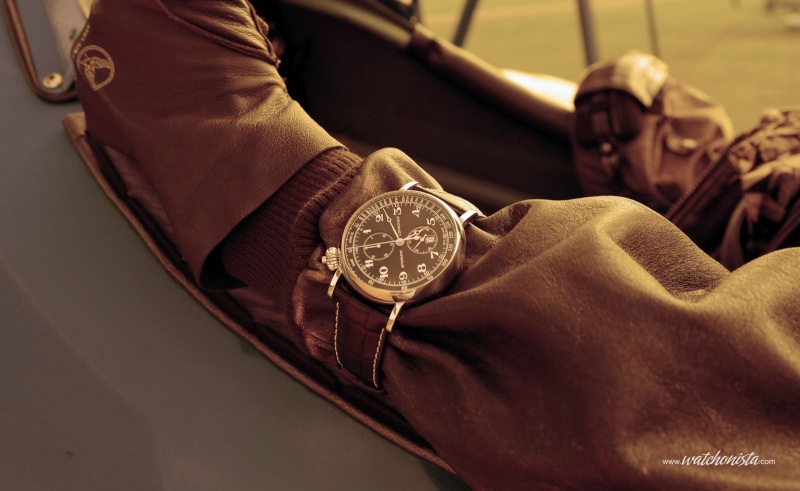
The first comprised small watches, around 37 mm in diameter and generally with three hands. These watches were the ones included in the standard issue equipment for both Allies and Axis soldiers during the Worl War II.
The aesthetics or movements were occasionally modified to suit the needs of the artillery or aviation. But generally, at the time, companies opted for the second category, the XL cases, either for their readability (B-Uhr, Panerai), or because small calibres for chronographs (particularly the split-seconds chronographs) were neither as common nor as reliable as these.
The new Longines Avigation is the perfect representative of the second category. It combines a 49-mm case with, at least in its vintage version, a large calibre.
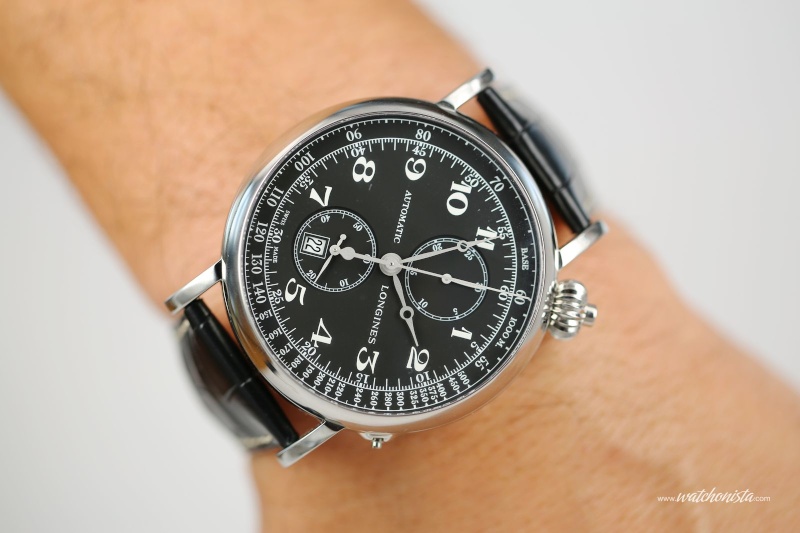
In fact, the military name A-7 was coined by US Air Force officials in the early 1930s. The A-7 used to be given to navigators, notably those in the B-17 bombers, the "Flying Fortress" and bore the term "Avigation" engraved on the back of the case. Then, in 1943, this watch was replaced by a smaller one, the A-11.
In the 1930s, specifications were determined by both the pilots’ needs and the style of American watches during that era. Funnily enough, it was three Swiss manufacturers – namely Gallet, Meylan and Longines – who won the call for tenders at a time when Swiss and American watchmakers were engaged in an acrimonious commercial dispute. This situation is comparable with the recent war of words about the Airbus A400, which was chosen as a military cargo plane in the United States over American competitors.
The watch is a 49-mm polished steel chronograph with a single push button and almost straight lugs. The black dial was creatively turned 45 degrees and has Breguet Arabic numerals.
Pilots typically wore their watches in unusual places, such as on the inside of the wrist or on the leg. That is why the crown was placed at 2 o'clock.
But truth be told, it took some time to learn to read the time on this watch, since it was difficult to tell apart the watch's hands from the big indexes. The finishing on the watch's hands is strange, to say the least; they seem to have been galvanized but have an exceptionally matt coating. It's an original touch, but in the end a very much welcome one since it reinforces its tool-watch/military appearance.
But there are more things that surprise us about this watch. Why, despite the fact that it was advertised as being 49 mm in diameter, have the dial's edges have been rounded, reducing the actual diameter to only 46-47 mm. (Current owners of a 47-mm Panerai will know the feeling).

Even its fit is original. Indeed, the lugs are too big sit snuggly on the wrist, so we find it a shame not to be wearing it over the sleeve of a bomber's jacket.
Turning the watch over, you will find an additional thickness, the hinged back of an officer's watch, which opens to reveal a Caliber 7750 modified to fit a column wheel. Longines named this particular caliber L788.2. It beats at 28,800 vibrations per hour and has a 56-hour power reserve.
Together with the column wheel, the timepiece's other great particularity is the single push button. For detailed information concerning the 7750, please refer to my Wikipedia article.
Furthermore, readability is quite limited because of the inconvenient position of the dial and the absence of Luminova, which makes the watch unsuitable for poorly-lit spaces.
This all begs the question: does this watch have any qualities at all?
Well, we should bear in mind that it is a genuine piece, and that is where its quality lies. Longines were not trying to produce a politically correct watch or an "easy" watch. Instead, they opted for a very faithful reproduction of a US version of a B-Uhr to be sold for less than CHF 5,000, an authentic watch that had its place in the other Great War. So this particular A-7 is not just a marketing operation or a made-up story about aviation. This watch is the quasi-identical reproduction of a most legitimate piece.
The very fact that it is in no way an "easy" watch means that it is a great watch, even a unique one. Hats off to Longines, then, for the production of an almost-without-concession (it’s the date that guilds the lily) neo-vintage piece with an excellent finish. The black colour of the dial is beautiful, as are the indexes on the dial), and all that for a fair price.
The Longines Type A-7 makes one wonder what the point of watch collecting is and, in a broader sense, what is the meaning of the passion for horology. Is it about purchasing watches with 40-mm opaline dials (typical of the Chinese market)? Or is it a matter of deliberately choosing to acquire completely out-of-the-ordinary instruments representing a specific era? In other words, would you prefer a beautiful object for your wrist as a sign of your social success, or would you prefer being adventurous?
If you prefer the latter, then this Longines A-7 re-issue is a must, because it is a timepiece that bears a greater history than the B-Uhr (American military aviation was already a at the top of the league in the 1940s).
Besides, this model is incredibly faithful to the historical one and that makes it a radical watch in almost all respects. And all this for the modest sum of CHF 4,850.
Longines Heritage Military 1938
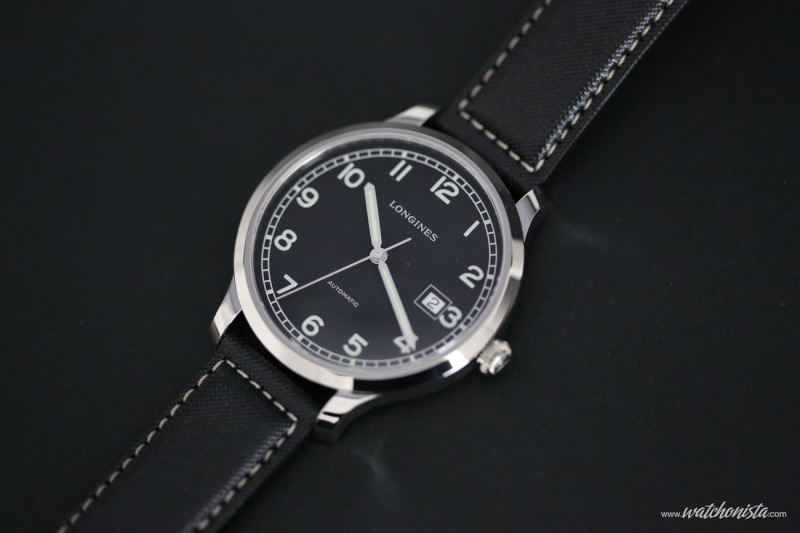
Longines did not really specify the source of inspiration for this Heritage Military 1938… What can be said is that it seems to have been modelled on the small generic watches troops used to wear. This watch is the prototype of the soldier’s functional watch.
The 40-mm Military 1938 features three hands, a steel case and, obviously, a black dial and white Arabic numerals and indices for better contrast. An interesting aspect of this watch is its beautiful sword-shaped hands, rarely seen in recent watchmaking.
Optimum versatility is guaranteed since, unlike the A-7, it makes use of Luminova. However, it shares a common feature with the new Avigation type A-7, an automatic calibre which was not the case with their ancestors.
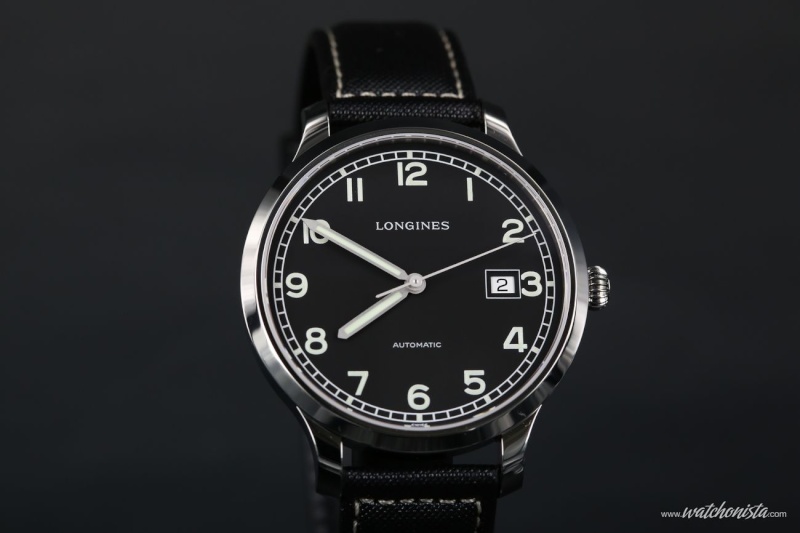
Longines revisited the calibre: an ETA 2892, here called L.619/2, with a frequency of 28,800 vibrations per hour and a power reserve of 42 hours.
Another commonality with the A-7 is the date that sits on the 6 o'clock spot, which was obviously not a feature on the original watches. This puts practicality before authenticity, which is a pity.
The Longines Heritage Military 1938 fits the wrist very well and is very easy to read. It can be worn with all clothing styles and is suitable for all occasions thanks to its sober look. But what really makes this watch fascinating is that only an expert will recognise it, as it takes someone who is passionate about horology to identify a genuine military watch.
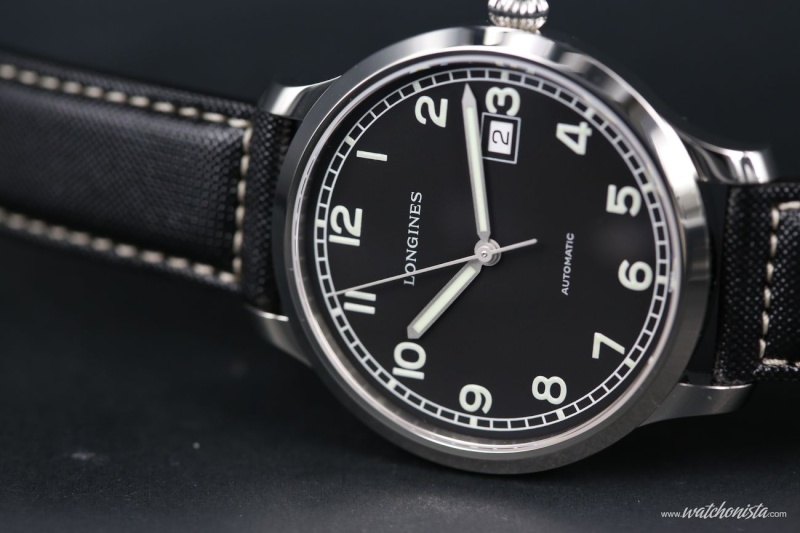
Its main advantage is that it is user-friendly, in contrast to the A-7. Its main disadvantage, however, is that it lacks the devastating charm of the A-7.
In keeping with the Longines tradition, its price is reasonable, CHF 1,250. This puts it in direct competition with pilot watches manufactured in Germany.
However, the fact remains that the Heritage Military 1938 is a versatile timepiece with one of the great names in watchmaking written on the dial.
Longines presented the A-7 and the range of models of the Military 1938 at Baselworld 2012 and 2013. In so doing, the company showcased a duo a pair of timepieces that are authentic reproductions of two completely different watches in terms of functionality but that are both deeply rooted in history. Thanks to their reasonable pricing, they remain accessible to a great number of watch aficionados.
In sum, we might well ask, which brand other than Longines has the history, industrial capacity and creativity to achieve such a feat nowadays?


